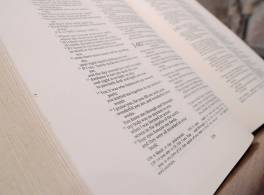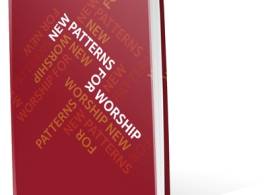Stories from the four churches
♥
St Ann’s has a music planning group which consists of the organist and representative members of the choir, the music group, the worship group, and the clergy. They meet regularly to look at themes for services, special occasions etc., to plan the music three months in advance.
Representatives of this group go to youth events and to diocesan music events so that they keep abreast of new music resources. A training day was recently held in the parish when a tutor from the RSCM came to introduce them to some new music for the Common Worship services, and new ways of singing psalms, as they felt that their eucharistic worship was in danger of being stuck in a rut musically. The organist and a member of the congregation who is a music teacher are working together to write some music for the Eucharist which will suit their congregation and musical resources.
The choir and music group have practised a new song, and some of the congregation have learnt it in their home groups. Today the music group is teaching the new song before the service starts, so that it is familiar before it is sung in the service later.
♣
St Bartholomew’s organist is very willing and enthusiastic, but only has limited time, as she also plays for the Methodist church down the road. She chooses the music for two Sundays a month, using the RSCM’s guide, Sunday by Sunday.
The music group (two or three adults and a group of enthusiastic children) have been playing simple music together for a while. Because of their limited resources, they have been accompanying songs in the usual ‘hymn slots’ in the services, but have also been experimenting with using music in other ways. They have used Taizé chants as responses to the prayers. These chants work well as the music can be adapted to the number and skill of the instrumentalists available. Today they are playing a piece after the readings, when the congregation can have space to reflect on what they have heard. The music is simple enough for the children to join in, yet the skills of the adult musicians are also used in playing and singing the harmonies.
When the music group learn new songs, they are very keen to share them with the congregation. They have made a few mistakes along the way by using too much new material without giving people a chance to learn it, but, by and large, the congregation are pleased at the enthusiasm and commitment of the music group, and are happy to learn new music alongside using the traditional hymns which they know.
St Christopher’s have an organ, but no one who can play it. Their large robed choir is now reduced in numbers and its members are all growing old; several can no longer get to church regularly.
There are no other musicians in the congregation, so the church decided to send one of their younger members, who can sing, to have guitar lessons. He is getting more proficient at basic chords and will soon be able to lead and accompany some simple songs for the congregation to sing.
Meanwhile, as they felt that using music adds something special to a service, the congregation have been trying unaccompanied singing. Today the songs are ‘The Lord’s my shepherd’ and ‘Amazing grace’, which people feel they know well enough to sing confidently. They find singing hymns with a number of long verses difficult to sustain, so they are using music which is simple and short. The response to the prayers today is a sung one from Iona, ‘Through our lives and by our prayers, your kingdom come’.
For the Eucharist, they have been contemplating using a simple cantor-led setting for the acclamations, which can be sung unaccompanied.
♠
The organist at St Dodo’s chooses all the music – without consultation with anyone. He tries to fit in with the theme or season, using the index in Hymns Ancient and Modern. He also directs the choir, who are a group of enthusiastic singers, many of whom don’t read music. They lead the congregational singing and persevere with Anglican chant, but don’t manage many anthems. Sometimes they’re tempted to try pieces they hear on CDs made by their cathedral choir – like Schubert’s Mass in G. When they tried part of it, it proved far too difficult for them and they faltered and then completely stopped halfway through.
The youth group would like to sing more up-to-date music, so for today’s all-age service, the organist has agreed to play ‘Sing Hosanna’ and ‘Shine, Jesus, Shine’. The vicar announces the number of the song, and reads out the first line, but his words are drowned out as the organist, keen to get the modern songs over, starts to play. There is a retired schoolteacher who has offered to involve some of the children who play recorders, and she has taught them to play a song from the Iona community, ‘Will you come and follow me’. They haven’t had much time to practise, and haven’t checked how many verses there are. When they stop playing, the vicar says, ‘There’s another verse yet,’ and there is a long pause while they all get ready to play again.

Teaching the congregation new music
* Be positive: ‘We are going to learn a song which fits with today’s theme …’, not ‘I know you don’t like learning new music but…’
* Know the music well enough to sing it in the bath yourself.
* Pitch the music at a sensible level to suit everyone – if possible, get somebody to give you a note first.
* If at all possible, use your voice to teach the melody – or at least, an instrument which plays the melody line, not full harmony.
* It may help to sing the whole of a verse to the congregation, so that they get the gist.
* Then learn the music line by line, unaccompanied. You sing a line, and let them sing it straight back to you. Warn them of any tricky bits, or point out where the tune repeats. If they make a mistake, put it right straight away. But always be encouraging.
* Using your hand to show where the notes go up and down can be a helpful guide – both when singing each line to demonstrate, and when encouraging the congregation to sing it back.
* Think about when you’re going to teach the new song. Don’t do it immediately before it’s sung in the service – it breaks the flow of the worship. You could teach it before the service. Ideally, it could be taught the week beforehand, and then rehearsed briefly before the service in the week it is to be sung. If your church has a choir or music group, they can sing the song one week (if it is appropriate to the service), to help people to become more familiar with it.
Believe in the voice God has given you. It is the voice of an apprentice angel. Believe in the voices God has given other people.
John Bell, Iona Community, in Heaven Shall not Wait

Why use music in worship?
* To make the text special, ‘different’ from everyday speech.
* It is corporate, something we can all join in with, and encourages participation.
* It is memorable, and helps us to remember the words.
* It expresses feelings and emotions in a deeper way than words alone.

How to use music in worship
* To ‘break up’ a section of a service or a whole service.
It may be useful as a response after a period of listening, or to allow a change of posture after a period of sitting or kneeling.
* To complement action.
It is often used to ‘cover up’ an action, e.g. taking the collection, but is better used in its own right or complementing an action, e.g. singing a meditative prayer while giving people space to light candles or use some other symbolic action.
Music makes us more aware of shape. Its use can make sound and silence more meaningful, and can give shape to the time we spend in prayer and praise.

Where to use music in worship
* Gathering. This is not just music for the entry of the ministers, but music which will help the people of God to gather for worship. Thought needs to be given to the exact position for the music in the opening section of the service.
* Praise. The obvious places are the Gloria, Gospel Acclamation and Eucharistic Prayer in a communion service, but praise as a response to God may come at various points and be expressed in different styles of music.
* Response, e.g. after the readings and the sermon. How do we use psalms as a response to the readings, and is there a balance of word and song in that part of the liturgy? Music does not always have to have words in order for us to use it to respond to God – just as words do not always need to have a musical setting.
* Proclamation of the Gospel. Do sung Gospel Acclamations heighten the expectation of listening to God’s word? If they do, should we use music in a similar way around other readings from Scripture, or the sermon?
* Affirming our belief. One of the authorized Affirmations of Faith is a hymn. Are there other ways in which we could affirm in song the underlying principles of our belief?
* Prayer. Often sung responses are used. What other music would enable us to deepen our collective prayer?
* Offering. We offer ourselves and our gifts to God. How do we express the joy of our offering in song?
* Contemplation. There should be space for both silence and reflection in our worship. What kinds of music can contribute to that contemplation? Or is this a time for the music of silence?
* Sending. We are sent out to the mission of the Church in the world. What kind of music enables and strengthens us for this task?

Questions to ask when choosing music
* How does this fit into the overall theme of the service, or the readings?
* How does it fit into the shape of the service, e.g. is it suitable for the gathering, or the offertory, or a prayerful response?
* How does the music fit with the overall style of the service, e.g. is it a celebratory Eucharist or a meditative Evening Prayer?
* Is the music well known to the congregation, or does it need to be introduced to them first?
* What resources do we have? What is achievable by our musicians and congregation?
New Patterns for Worship, material from which is included here,
is copyright © The Archbishops' Council 2002 and published by Church House Publishing.


